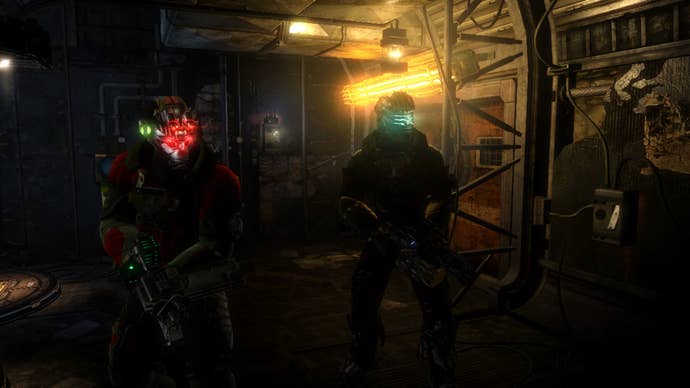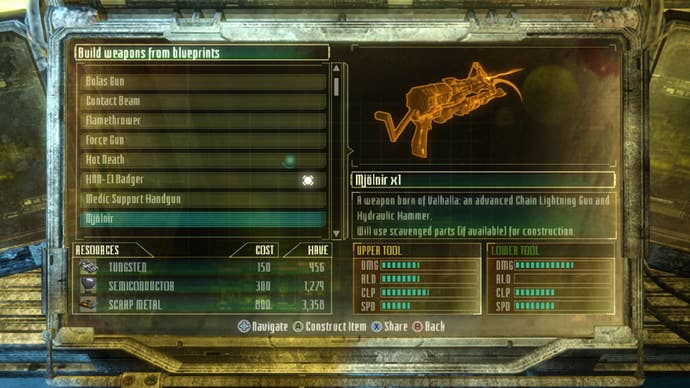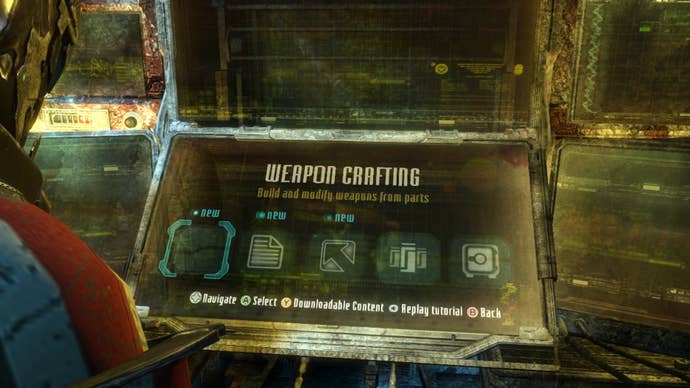A Dead Space remake is great, but I still wish we got to see a Dead Space 4
The world that Visceral was creating in Dead Space 3 could have lead to some unique, interesting things... until it was cancelled.
Dead Space is a lot like the Fast & Furious films. Except whilst Vin Diesel began by stealing DVD players and ended up drinking Coronas for family, Isaac Clarke started out silent on a dingy spaceship and ended up cracking wise whilst shooting cultists in the face with a toaster taped to a shotgun. Point being, both franchises became a far cry from what they once were, but only one of them lived to tell the tale.
Coming to life as a Resident Evil 4-inspired horror title, Dead Space morphed into a co-op action shooter over the course of its own trilogy in an effort to meet EA’s sales expectations, as the company wanted necromorphs to go mainstream.
The series’ mechanical and thematic changes are most dramatic in 2013’s Dead Space 3. As the third entry, it has so many overlooked ideas that it set up for the cancelled Dead Space 4, and with the reboot set to release next year and the entire trilogy on EA Play and Xbox Game Pass, there’s no time like the present to try out the maligned – but inventive – title.
Dead Space 3 forgoes pure horror and isolation for an action-focused narrative with co-op gameplay and weapon crafting, and upon a revisit it’s clear these mechanics are quintessential Dead Space. At a glance the design may feel somewhat uninspired for the time - with co-op and survival mechanics all the rage - but upon further examination it’s clear that they were an excellent fit for the franchise.

In the co-op mode, two players control series protagonist Issac Clarke and new character John Carver. You can plan attacks together and blast necromorphs to hell in a simple drop-in, drop-out take on Dead Space, where action ousts dread.
What set this take on co-op apart, however, was how it divided the two players; those controlling Carver would often get differing audio and visuals, especially during the co-op exclusive missions.
Having both players working together, but separating how they see and interact with the game itself was a genius way to break the fourth wall. The in-game hallucinations forced both players to communicate about what they were – and weren’t – seeing at any given time. Most co-op modes in games become a shooting gallery with an extra pair of boots on the ground, but Dead Space 3 added a co-op layer that felt like something only this franchise could pull off.

Having the Carver player be the only one to see these hallucinations left the Clarke player in the dark, and created an interaction outside the game itself where the players have their own dialogue about what’s happening on one of their screens. It’s simple-but-effective co-op design, and highlights the unique isolation Dead Space is known for.
The hallucination mechanic took true effect during the three co-op missions, and occasionally reared its head elsewhere for a brief cutscene. Dead Space 4 could’ve integrated a co-op player even further into the game, having smaller moments occur throughout that drive the two players apart, instead of limiting most of it to a few missions.
Carver is present in the story whether he’s being played as in co-op or not, and whilst his inclusion led to some interesting moments, playing solo does show some funny (and unintended) cracks in the design. Sometimes Carver would appear from off-screen during a cutscene, for example, even if he was literally nowhere to be seen moments before.
Dead Space 3's co-op was by no means perfect, and it heavily pushed the focus of the game to action over horror, but what this flirtation with co-operative ideas included was a legitimately compelling way to put a spin on group play in horror games in general.

Dead Space 3 also introduced plenty of combat variety with weapon crafting. Now, instead of finding a number of weapons with alternative fire options as the story progressed, players could build and upgrade their own weapons from the very beginning.
The freedom to design your own weapons was a great way to emphasise creativity, as players could find weapon schematics, upgrades, differing parts and crafting resources as they progressed the story, and every piece could be transformed into a unique looking weapon. This was a smart way to emphasise Issac Clarke’s engineering background too, and shifted the resource management from previous games in a new, natural direction.
Splicing two weapons from previous games together could make them quite overpowered, especially considering the number of attachments and upgrade circuits that could be added on, but this is what made the weapon crafting system so fun. The ability to craft a shotgun that inflicted statis slowdown on enemies which could then rip their legs ripped off with a line cutter was Dead Space to the max.

Despite turning the player into a walking death machine, multiple design decisions kneecapped weapon crafting right out of the gate – it would have been good to see Dead Space 4 attempt to readjust them and perfect the formula that the third game in the series came so close to cracking.
For starters, there’s only one type of ammo across the entirety of Dead Space 3, which negated the need to switch up your guns and tactics, as you could craft something with powerful standard and alternative fire modes, pump your upgrade circuits into it, and cut through almost all necromorphs and cultists at every turn.
Dead Space 3 director Ben Wanat also said in a 2018 interview with Eurogamer that “it became very difficult to tune when you allowed players to break the primary and alt-fire pairings. There would have needed to be a focus on re-perfecting the weapon balance while still giving players plenty to tinker with”. So hopefully the cancelled Dead Space 4 would have taken aim at the weapon crafting system in an effort to rebalance it, empowering smart players and endangering greedy ones in equal measure.

The weapon crafting system was also derailed by microtransactions, and whilst these were likely implemented due to the cost of development (and a IAP-happy EA), they don’t do the burgeoning crafting system any favours.
Multiple weapon and suit packs – alongside ways to continually farm extra resources used in weapon crafting – are offered to the player from the start for real-world money. Players could still buy specific schematics and craft a fair amount of guns with in-game resources, but including the option to buy resources in a linear story-driven game created a shortcut around the entire mechanic. And left a bad taste in players' mouths, to boot.
The upcoming Dead Space reboot is reversing the inclusion of microtransactions, and pre-release footage shows classic weapons and a lack of crafting. Going back to the series roots means co-op, weapon crafting and a balls-to-the-wall narrative about giant alien moons are out the window. For the reboot, getting rid of all this is undoubtedly a good thing, but it highlights the mechanics and ideas the cancelled Dead Space 4 can now never explore.
Dead Space 3 was a game chasing trends, but even under the push for more sales were some excellent mechanics that felt right at home in a universe that was starting to find its big, stompy feet – it’s a shame the original team won’t get a chance to develop them.
I have no doubt that the Dead Space reboot will genuinely attempt to modernise the original and fold in cancelled ideas in a way that works. Nonetheless, its existence all but confirms that Dead Space 4 is bereft of life, and no alien Space Marker is going to bring it back.

